What is Domain Blacklist Checker?
The Domain Blacklist Checker by Sitechecker is an online tool that allows users to check if a domain or IP address is listed on any blacklists that could affect their SEO rankings and email deliverability. It’s designed to help website owners ensure their domain has not been flagged for spam or malicious activity, which can help maintain their website’s reputation and visibility online.
How the tool can help you by
Blacklist Status Verification: directly checks if a domain or IP is listed on DNSBL databases for potential blacklisting.
Detailed Report Generation: provides reports on the blacklist status, offering insights into any issues detected.
Website Security Checking: offers a comprehensive analysis of website vulnerabilities, providing practical advice on addressing them.
Key features of the tool
Unified Dashboard: offers a single, integrated view for monitoring website analytics and performance indicators, simplifying data analysis.
User-friendly Interface: designed for accessibility, it ensures professionals and beginners can navigate and use the tool effectively.
Complete SEO Toolset: provides an extensive collection of SEO tools, covering all aspects needed for comprehensive search engine optimization efforts.
How to Use the Tool
Step 1: Enter the domain you want to check, then click the “Check blacklists” button
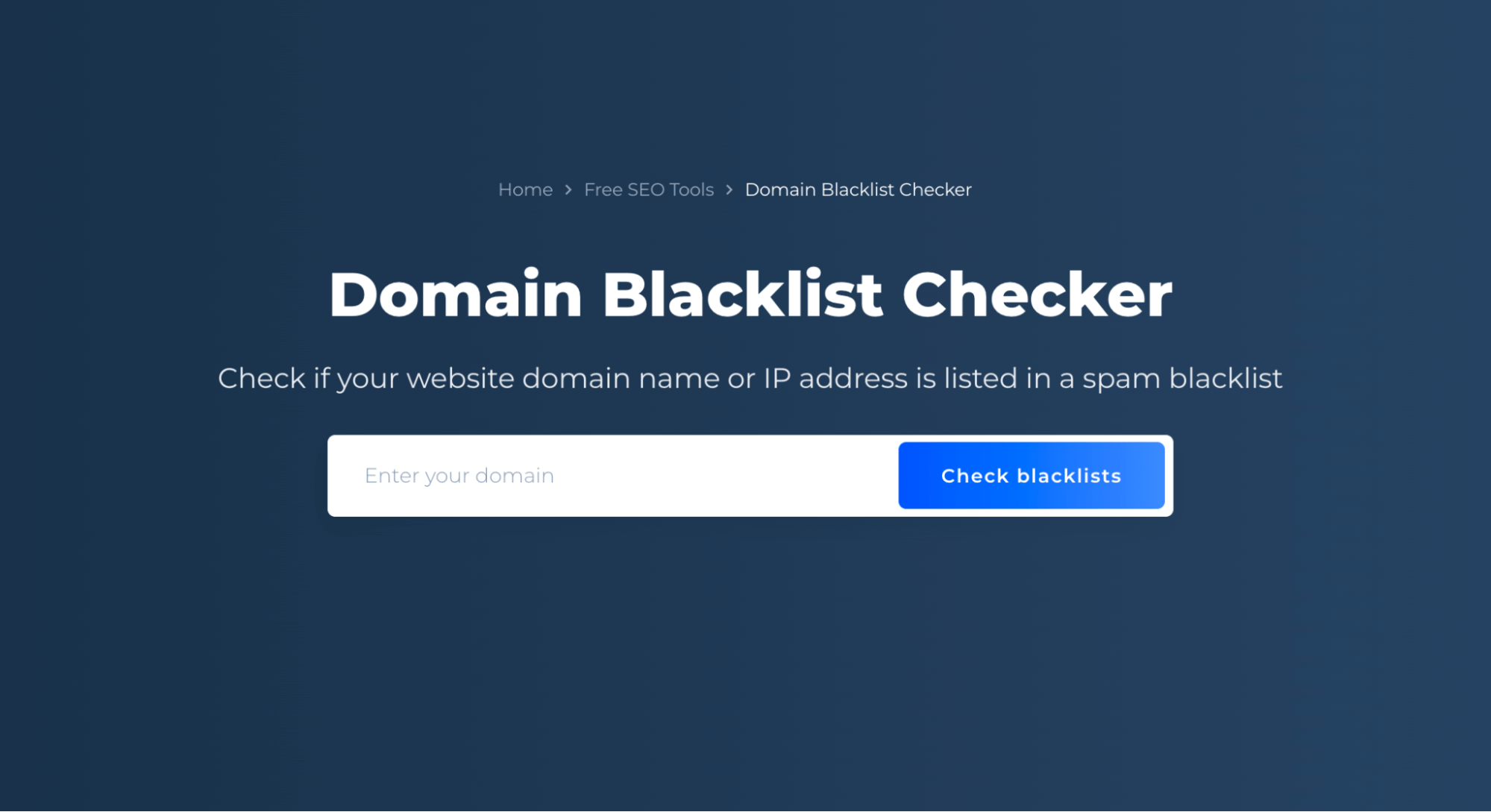
Step 2: Receive the result
In a matter of seconds, you get all the information regarding your website gathered in one comprehensive report.
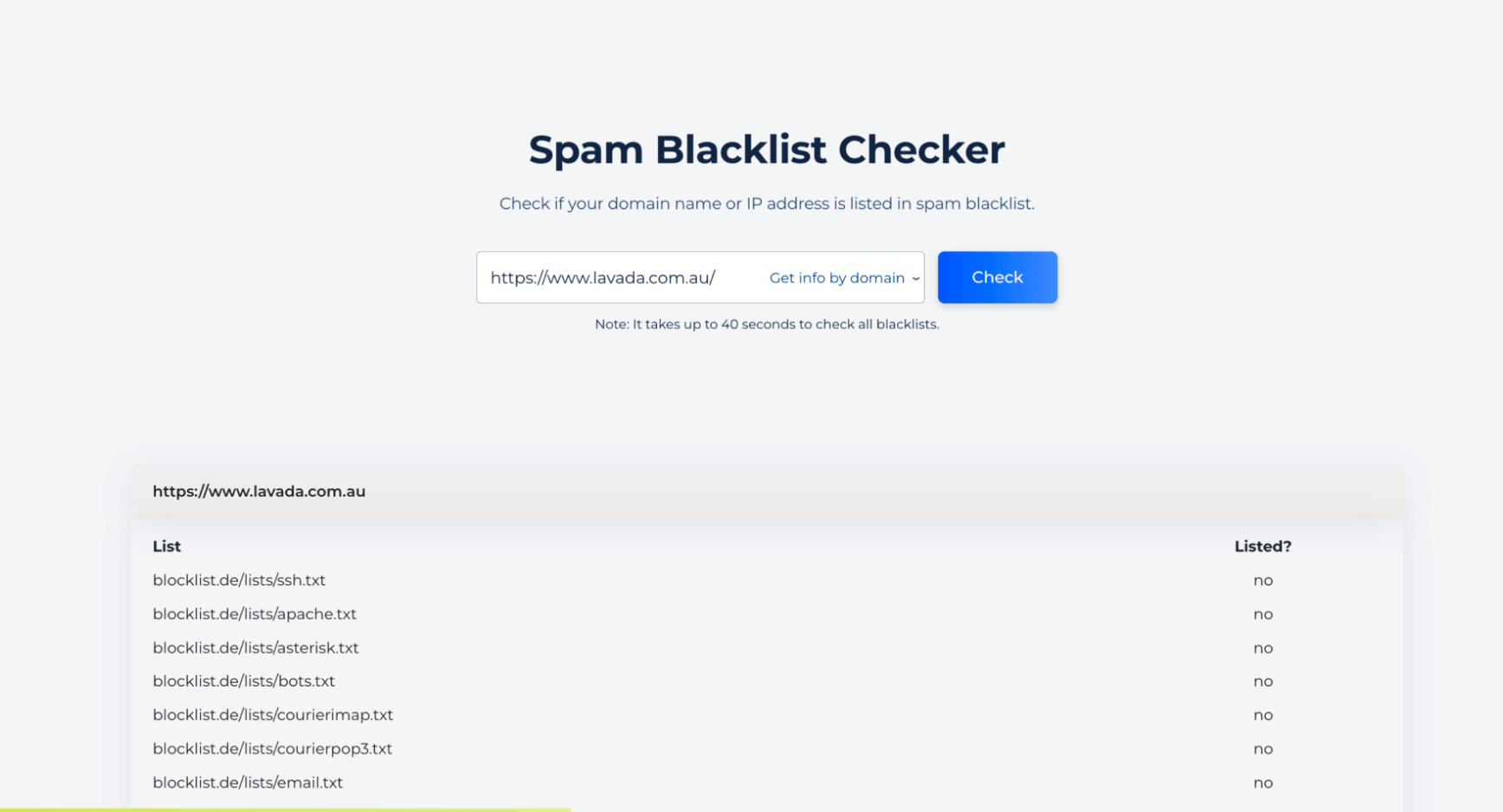
Furthermore, if needed, you can perform a new test using the IP address instead of the domain name.
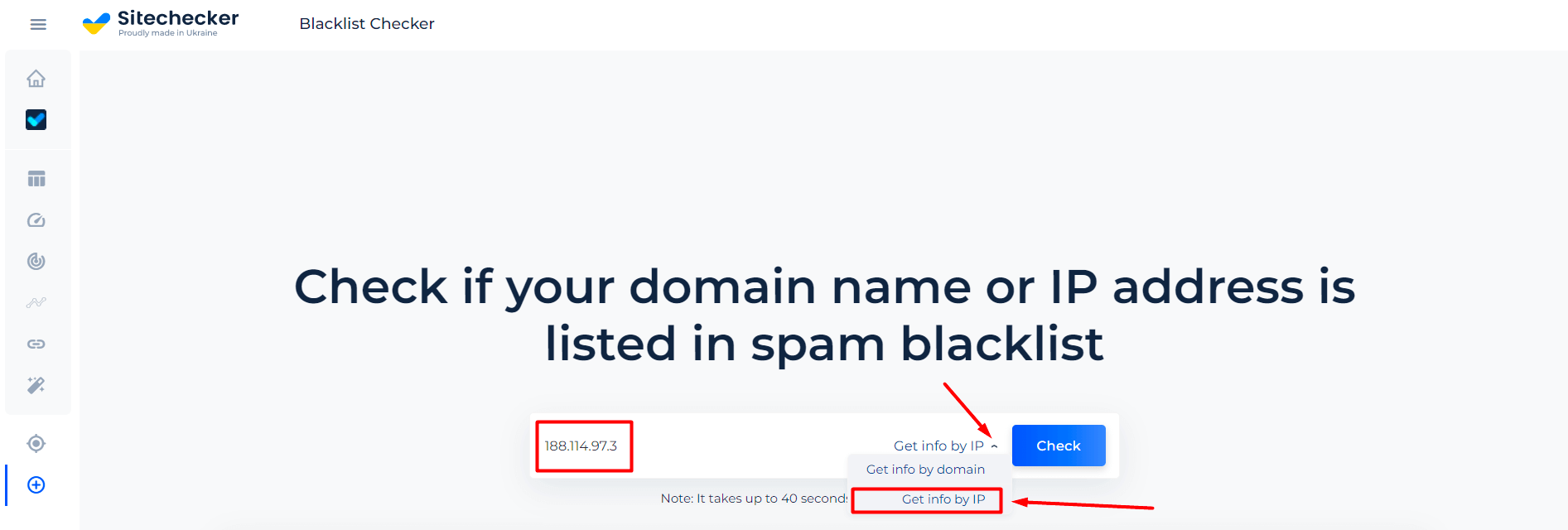
To initiate a comprehensive SEO analysis, simply click the “Start Tracking” button.
Additional Features of Domain Spam Checker
When scanning your domain for blacklisting, we crawl your site in the background. Thus, by clicking the “Check report” button on the banner, you get a comprehensive website audit report. It helps you identify and address any issues on your site.
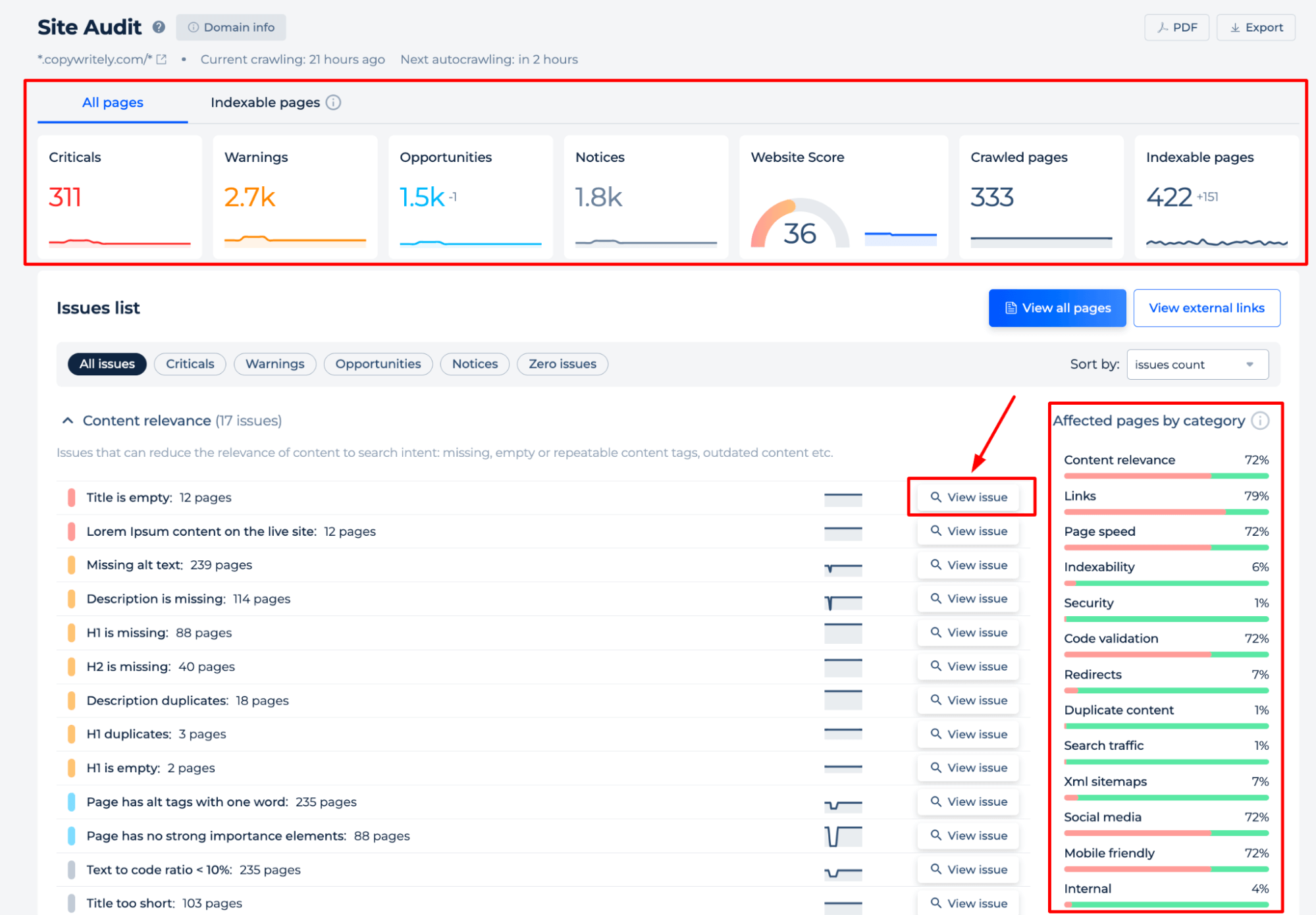
Additionally, we facilitate checks by IP, even if you don’t know your website’s IP. You can conveniently obtain it by clicking on the domain info on the site audit page — just copy it from there. With this, you are all set for an IP block list check.
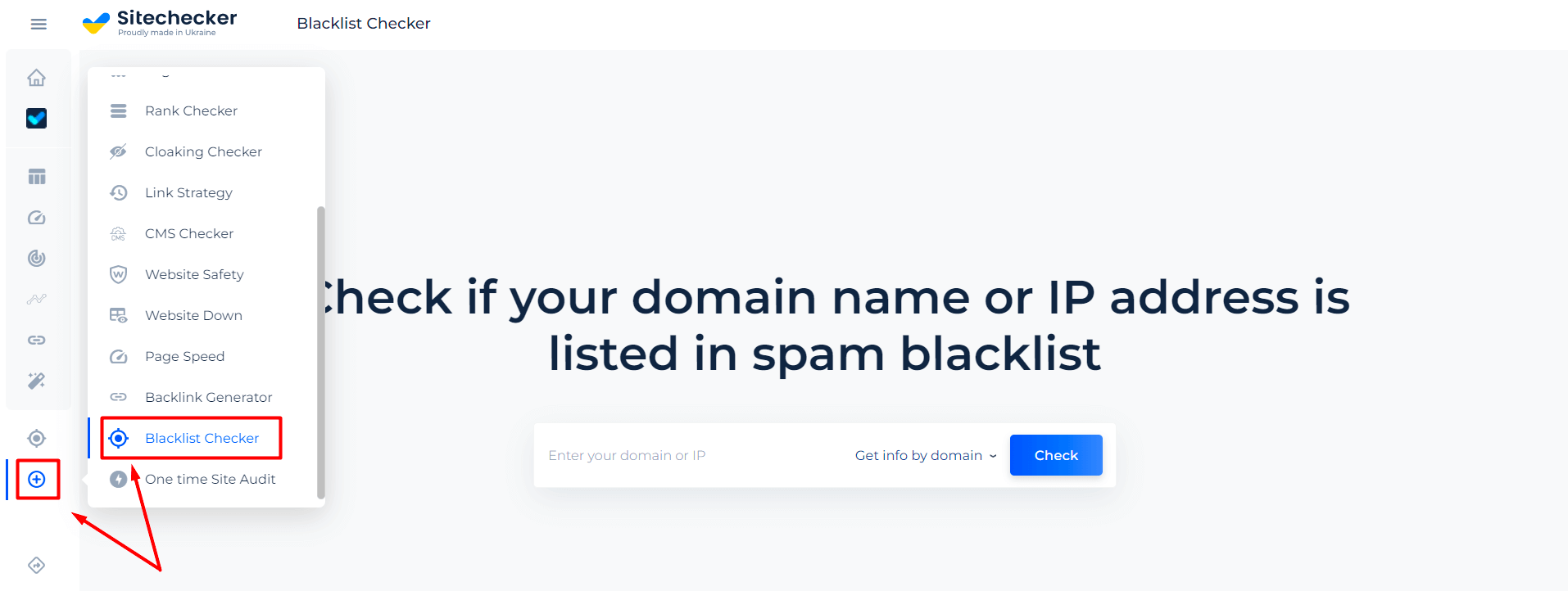
Concluding Remarks
Wrapping up, we can say that a Blacklist Lookup is vital software for safeguarding your website or IP address. It lets you determine if you’ve been banned, which could significantly impact your traffic. The checker scans the DNSBL database and provides a thorough SEO evaluation and site monitoring. It is simple and fast, delivering a comprehensive report in seconds. Additionally, it offers an IP blacklist checking feature for complete convenience. This tool’s importance in maintaining a secure and efficient digital presence cannot be overstated.






